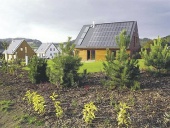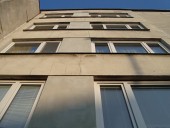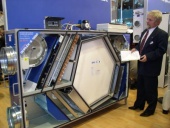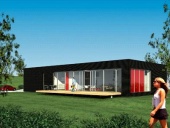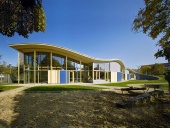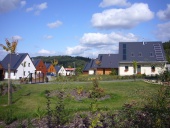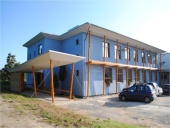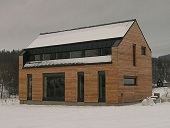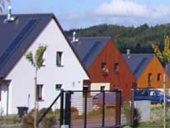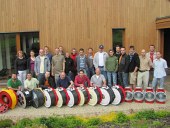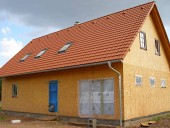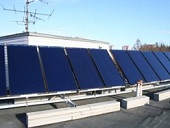Low energy (LEB) and passive buildings (PB) are becoming standard for new constructions in EU countries. They aren't experiments anymore, but absolutely ordinary mass production of sophisticated residential buildings. Only in Germany, Austria and Switzerland there are already thousands of buildings that meet the passive standard and their number doubles every year. The cost of passive buildings is only 5-7 % higher than those of conventional ones, and yet, their consumption of energy and heating is up to 90 % lower! Part 3 about ventilation systems for normal buildinghs and EPD.
Archiv článků od 27.9.2010 do 28.2.2011
The current market is over saturated with different technologies and products that promise to rocket return, versatile use and effect for everyone. As it is the truth is a complicated thing and this article does not even look for it. Each technology certainly has its place, but if the specifications is thoroughly examined. The aim is (on a simple example) to compare seemingly incomparable. Custom effect of insulation of the facade versus applications of controlled ventilation with heat recuperation in classic family house.
Czech method for building quality classification SBToolCZ and the first certificated building X-LOFT
One of the way how to recognize quality of buildings are methods for sustainable buildings classification. SBToolCZ is a certification method for complex building quality classification according to sustainable buildings principles – including environmental, social and economic criterions. The SBToolCZ method is based on the international SBTool system. Criterions and requirements are being modified according to standards development on the international level. SBToolCZ was developed on Faculty of civil engineering (Czech Technical University Prague), CIDEAS centre.
Low energy (LEB) and passive buildings (PB) are becoming standard for new constructions in EU countries. They aren't experiments anymore, but absolutely ordinary mass production of sophisticated residential buildings. Only in Germany, Austria and Switzerland there are already thousands of buildings that meet the passive standard and their number doubles every year. The cost of passive buildings is only 5-7 % higher than those of conventional ones, and yet, their consumption of energy and heating is up to 90 % lower! Part 2. about regulation ventilation system.
Subsidy programs to promote the reduction of energy consumption and to increase the use of renewable energy sources are available not only in the Czech Republic but also in our neighbouring countries. Let's have a look at the possibilities of financial support are available in Germany field of energy efficiency and renewable energy sources.
Low energy (LEB) and passive buildings (PB) are becoming standard for new constructions in EU countries. They aren't experiments anymore, but absolutely ordinary mass production of sophisticated residential buildings. Only in Germany, Austria and Switzerland there are already thousands of buildings that meet the passive standard and their number doubles every year. The cost of passive buildings is only 5-7 % higher than those of conventional ones, and yet, their consumption of energy and heating is up to 90 % lower!
In 2007 we worked on the design for a energy passive construction for the nursery and gyms in Slivenec and a proposal to link the entire complex, where the nursery and the gym would be part of the already existing school site. A building permit was issued at the time for the completion and renovation of one of the pavilions of the elementary school. Within our design, we considered the completion of this pavilion and we included it in the architectural study of the whole design. Even though we were not counting on it, in the end, we got the first commission to revise the project for the completion and reconstruction of this pavilion, so it would become an energy efficient building according to our architectural modifications.
Passive buildings offer very good comfort combined with very low energy consumption. The excellent viability of this concept has been proven by the thousands of passive buildings that have been built. However, planning, design and construction supervision must be careful. The Passivhaus Institute (PHI) offers certification of buildings in order of assure sufficient levels of comfort and energy savings. In addition, they have also introduced a new certification that currently in pilot stage: EnerPHit, for the renovation of older buildings using passive building components. Along with this quality assurance for buildings and PHI also offers certifications for a wide range of products suitable for passive buildings, among which are window frames and ventilation units. Even architects and passive building consultants can get certified by the PHI. In the following text we will present the certification criteria and procedures.
The land designated for the construction of the house is located in the PLA zone of the Jizera Mountains. Although it is not part of the protected area itself, it was necessary to design a house that will comply with a large part of the regulations related to constructions of buildings within a PLA. When buying the land the builders realised that the regulations will determine the appearance of the building with quite some detail and they will have to be followed. At the same time, a very energy efficient house had been requested, even if that meant that certain restrictions would be manifested in its appearance.
The group of twelve residential passive houses and school facilities in Koberovy can be characterised as the first mass project of experimental construction based on energy efficient wooden structures carried out in the Czech Republic. The construction is located on a plot of land oriented to the South. The concept respects the regulations for the protected area Czech Paradise within urban communities, which require saddle roof, entrance through the longer part of the façade, limited glazing areas, among others. The concept does not result in a monotonous terraced construction. The new housing estate is logically related to the current character of the surrounding buildings in the village.
Among other things, the new version of the EPBD calls for more substantial improvements in the energy performance of buildings – gradual, until up to almost zero level by 2020. Such buildings are not likely to be feasible without high-efficiency ventilation systems, the proper functioning of which is conditional to an excellent airtightness of the building. Relevant experts from all over Europe understand that ensuring the conditions for the gradual improvement of airtightness in common building practices is a common challenge and task.
At the moment, an amendment is being prepared for the ČSN 73 0540-2 standard. The proposed changes have still not been made public, so this article will not comment in detail about them. We will focus on this issue in future articles. We want to pay attention to chapter 7, which deals with the air permeability of the building's envelope and the tightness of joints, which seem to conform to the current revision of the standard, meaning that, unlike other chapters, these changes are merely cosmetic.
Almost one third of the people in the Czech Rep. live in panel buildings, 30% of which have already been renovated. However, almost no reconstruction project has used the great potential to change the buildings into modern housing with the highest comfort of the 21st century, i.e. to turn them into passive buildings. The main saving measures are solving the change of air, quality windows and doors, insulation with sufficient emphasis on the relationship without thermal bridges. In order to illustrate the importance of thermal bridges we have randomly selected a five-section block of flats. It is only a reference example of the documenting processes in place, in which minor changes are a majority, and this is not, by far, the worst representative...
The directive 2010/31/EU on the Energy Performance of Buildings – called EPB, EPBD II or EPBD Recast – was passed last May. EU member countries are obliged to implement these new requirements into their national legislations. The implementation of 2010/31/EU was addressed by a number of seminars during the recent Aqua-therm 2010 trade fair. The following article presents you with the most important facts from the presentations and with links to information that was published before and during Aqua-Therm 2010.
Designing solar systems so they will produce the the most heat during the year or electricity at the lowest cost is quite a complex matter. A number of factors should be considered when calculating the solar systems, especially the intensity of the solar radiation in individual locations throughout the year. Without a simulation software that can work with this variable data, the calculation can only be very approximate. If we want to get more accurate results and fast, using sofware is esential.
The term shell construction does not have any legislative anchor. It is a concept originated from habit, which is commonly used both in construction theory and in practice. It comes from the time when the economy was centrally planned and construction activities were divided into main building production and secondary building production. The works for the shell construction were included in the former – foundations, vertical and horizontal load bearing structures and supporting elements of the room (roof trusses or truss system).
Thermal properties of enclosure walls have considerable impact on energy consumption of block of flats. Nowadays the proposal of insulation thickness in thermal insulation composite systems is often underestimated. This article is focused on proposal of optimal thermal insulation thickness in light of economy and energy performance.
zpět na aktuální články
